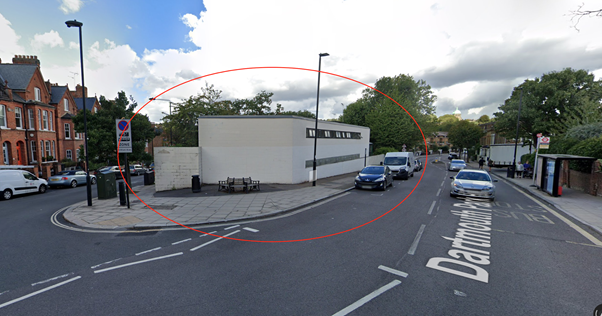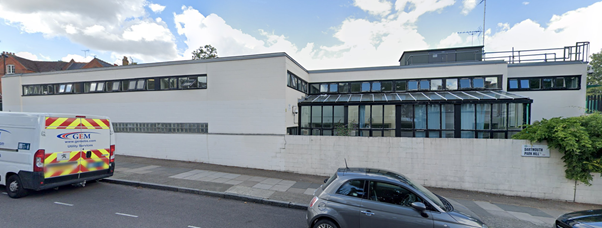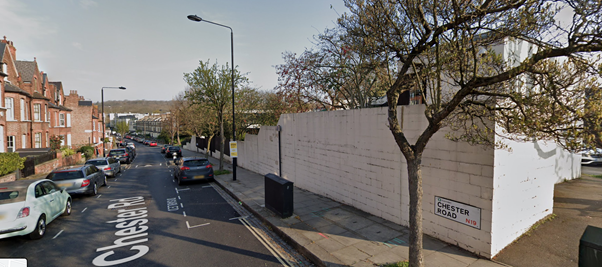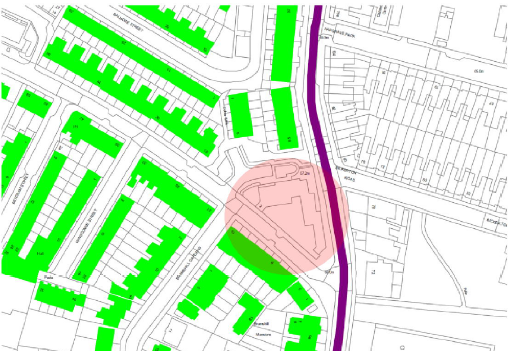When is it appropriate for a charity to campaign for an unremarkable recent building to be listed, preventing more homes for the homeless?
On 10th September, Camden Council registered an application by HTA Design LLP, a firm of architects, planners and designers, for the Council’s own housing department to replace the hostel at 2 Chester Road near Archway with 50 new homes for homeless people and families.
Two months later the 20th Century Society, a registered charity, announced that it was supporting an application to Historic England for the Grade II listing of the existing hostel, built in 1979. A listing would prevent those new social homes being built.
Should this really be a listed building?

The current hostel has little or no historic or architectural value, as London YIMBY, PricedOut and YIMBY Alliance explained in our joint submission to Historic England. It falls far below the thresholds to become a listed building.
The process to decide whether an historic building should be designated for listing is set out in the Planning (Listed Buildings and Conservation Areas) Act 1990. Applications to add, remove or amend an entry are made to Historic England, which then investigates the merits. To merit Grade II listed status under the Act, a building must have sufficient architectural or historic interest, but it falls far short on either of those measures.
A distinct lack of influential quality

In 2012 English Heritage undertook a review of buildings of architectural merit and significance. 2 Chester Road did not meet the test to be included in its Heritage at Risk review then, and nothing has significantly changed since then to change that conclusion.
The building is not a good example of the work of its architect, Sydney Cook, and the work of his Camden Borough Architect’s Department, for example in the buildings on Winscombe Street, with a characteristic way of responding to the form of surrounding terraced houses. The Chester Road hostel does the opposite.
Another dead frontage

The building has dead walls and frontage around much of its perimeter, losing the historic double-sided street frontage and making the surrounding streets less friendly and welcoming. When the Dartmouth Park Conservation Area was appraised, the site received so little local support that the local conservation area assessment doesn’t mention the building at all. In a sea of green on the map of buildings that make a positive contribution to the conservation area, 2 Chester Road is just a blank space.
Site not considered to be a positive contribution to the area

The 20th Century Society’s response is that they would like the existing building preserved and re-used. ‘If a larger building is thought necessary’ to provide housing for homeless people, they say, ‘we would like to see 2 Chester Road converted to an alternative, socially beneficial use.’
But the problem is that – despite some people’s hand-waving assertions to the contrary – Camden has no other site for the 50 homes it wants to build for homeless families, nor the money to buy another site. Charities have a duty to promote the public interest. That means trustees must be able to explain how the charity benefits the public by carrying out its purposes. It is hard to see how listing that 1970s building would ‘benefit the public’.
There is a general policy issue here because many charities, at one point or another, advocate positions that result in blocking more housing of one kind or another on various grounds. The 20th Century Society’s charitable purposes in its constitution include the objective ‘to save from needless destruction or disfigurement, buildings or groups of buildings, interiors and artefacts designed or constructed after 1914.’ (Emphasis added.)
That objective has no quality threshold. On its face, all post-1914 buildings are to be saved, however unimportant, ugly, unsustainable or unpopular. Are we to save a group of 1995 wheelie bins? They would technically qualify as a ‘group of … artefacts’. But there is one limit: the Society’s goal is only to defend against ‘needless’ damage.
No-one has suggested any specific alternative location or funding source for these homes in the real world. The only suggestions have been ‘somewhere else’. Presumably that does not mean the nearby Highgate Cemetery? Or perhaps Hampstead Heath? There is no green belt in Camden. Even if there were, someone would likely object to building on it, given the existence of an alternative site.
And if being homeless doesn’t qualify as ‘need’ , it’s hard to see what does. So building more homes for the homeless by replacing a building that does not meet the statutory tests for protection, when there is no realistic alternative site, is exactly the sort of thing charities should be campaigning for, when you consider the broader public interest test that charitable trustees are required to meet.
Some misleading environmental claims have also been made to try to block these new homes: claims that because the existing building has embodied carbon, we must not replace it.
You don’t get to just point to something you personally happen to like and shout ‘embodied carbon’ to stop it being changed. Real climate scientists look at what’s called the ‘counterfactual’. If we don’t build more with gentle density in places with good public transport where people can walk or cycle, people will end up building and living in remote but bigger houses with even more embodied carbon. That will be far away from densities where public transport is viable and so they will rely on model after model of car to get around, each with embodied carbon of its own.
The Royal Town Planning Institute helpfully spelled out the importance of walkable density – friendly streets where people can and do like to walk to meet their local needs – for reducing carbon emissions in its 2018 report.
Partly because of exactly this sort of misconceived objection to new homes, most of the homes we built in this country over the last few decades have been houses far from public transport, with people stuck in car dependent sprawl – when the slopes of prices and rents prove that many of those people would much rather live somewhere with better public transport.
So blocking these new homes where people can live sustainably, without needing a car, is profoundly damaging to the environment. By all means let’s get to standards that require full net zero demolition and construction as quickly as possible. But we won’t reduce carbon emissions in the meantime by pushing new homes out to areas of car-dependent sprawl. That would be the ultimate result of listing 2 Chester Road.
The most environmentally friendly thing is to reuse the materials and the embedded carbon of existing buildings to build better places and more and better homes near to public transport, with popular gentle density that will help the environment, make better bus services economic, and help to support local shops and high streets. To claim otherwise is just greenwash.
Listing the Chester Road hostel would harm some of the most disadvantaged groups in society. It would result in increased inequality, more homelessness, and further environmental damage. Charities should not be campaigning for that.

